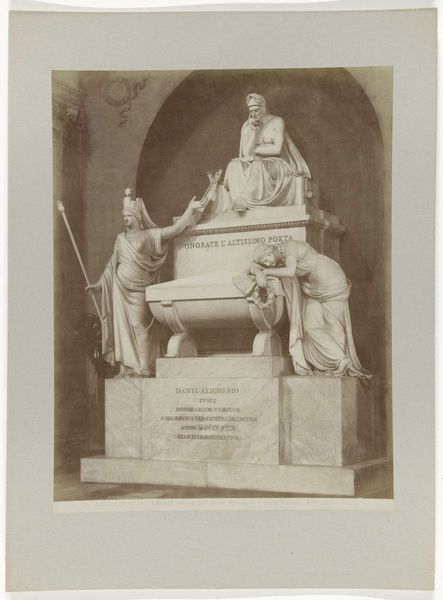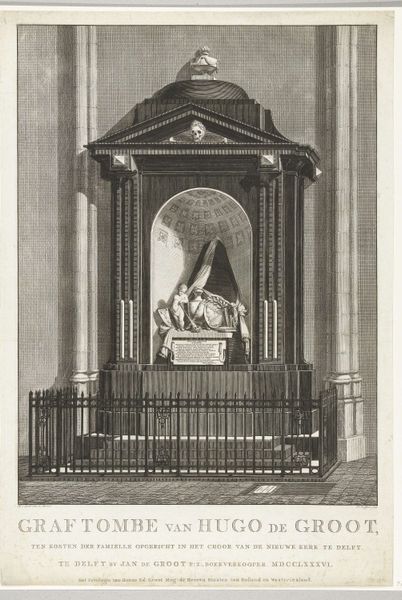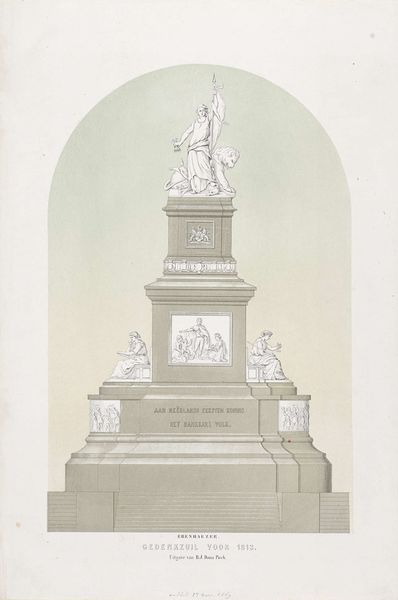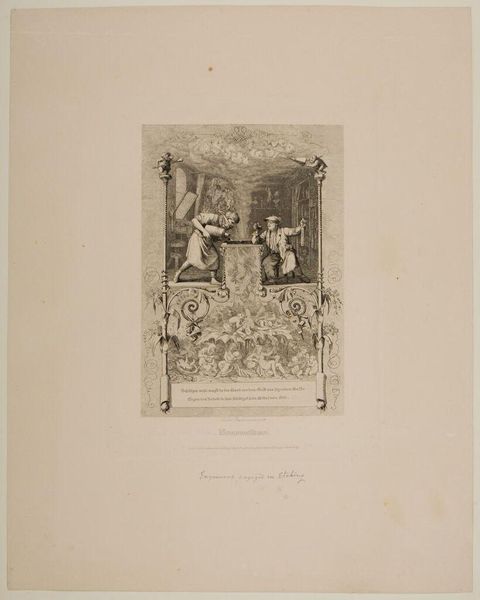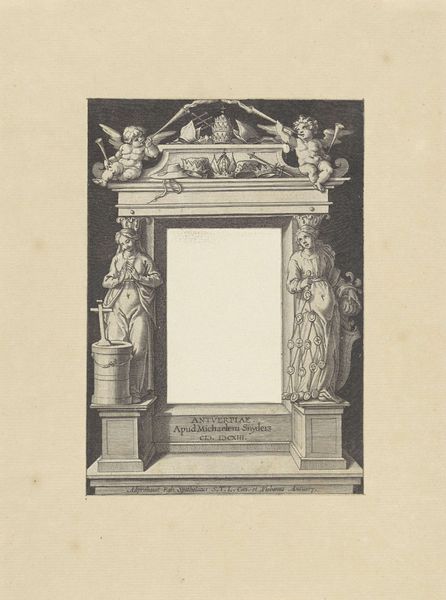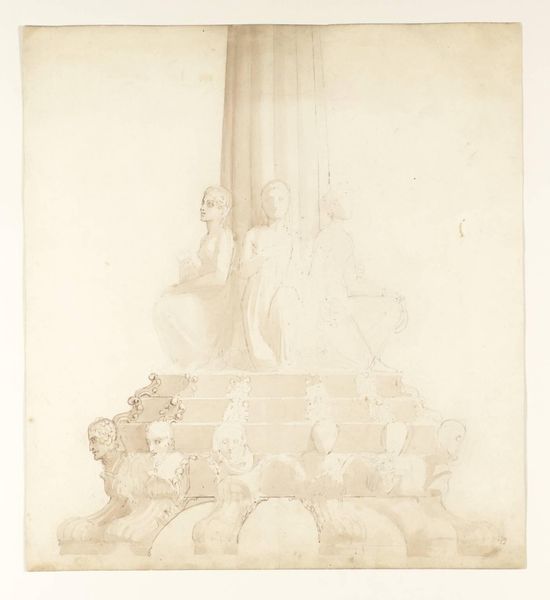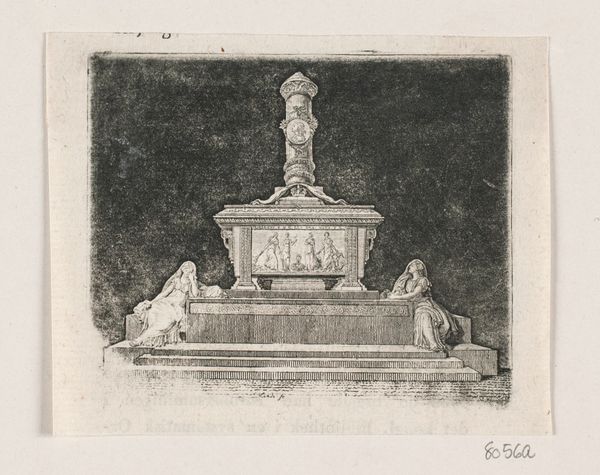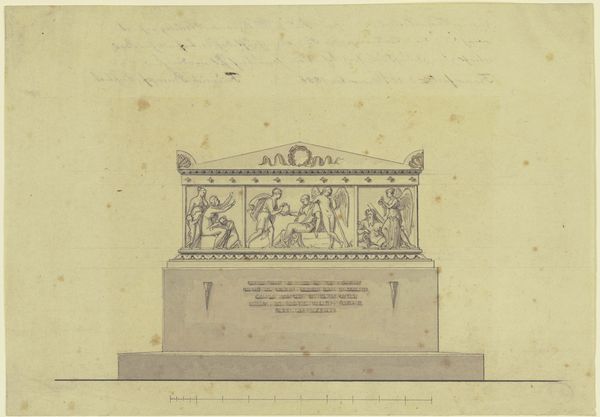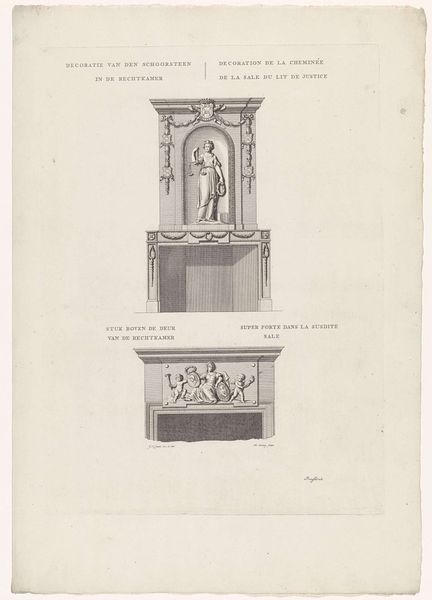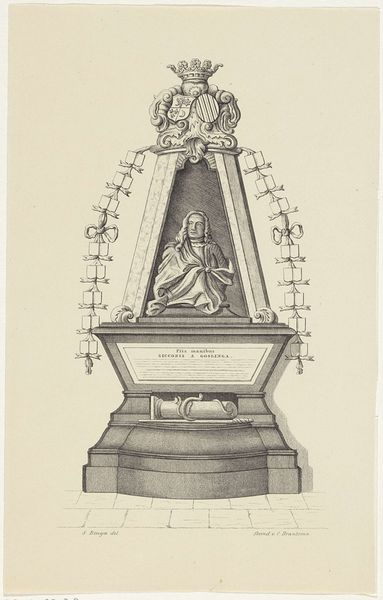
print, engraving
#
portrait
#
neoclacissism
# print
#
figuration
#
history-painting
#
trompe-l'oeil
#
engraving
Dimensions: height 582 mm, width 491 mm
Copyright: Rijks Museum: Open Domain
Curator: Let’s turn our attention to this print, "Grafmonument van de contessa de Haro," dating from 1772 to 1837 and attributed to Pietro Fontana. It's currently held in the Rijksmuseum collection. Editor: Oh, wow. Immediately, it hits you, doesn't it? Such stillness and sadness frozen in gray scale. It reminds me of walking through an old graveyard, the stones worn smooth with sorrow. Curator: Indeed. Formally, this work utilizes engraving techniques to achieve a trompe-l'oeil effect, mimicking the appearance of a bas-relief sculpture. It’s a history-painting with strong neoclassical elements, very much in vogue during that period. We see idealized figures draped in classical garb. Editor: "Mater Infelicissima," I think that's the inscription… "Most Unhappy Mother," with that figure clinging to the, I presume, deceased contessa, and others weeping around the bier—it is heart-wrenching, really. Curator: Precisely. The artist meticulously employs linear perspective to construct depth within the relief. Note the play of light and shadow, intended to replicate a three-dimensional sculpted scene, even though we're dealing with a two-dimensional medium. The garlands decorating the monument also point toward an interest in naturalism blended with formal constraints. Editor: What gets me is how distant the actual person, the contessa, feels. It is so formal, idealized even, that you don't mourn a real person, just a symbolic representation of grief and loss. Curator: That speaks to the broader cultural context. Neoclassical art was not solely concerned with verisimilitude but with conveying moral and historical narratives through a universal visual language, echoing Greco-Roman aesthetics. It aimed to ennoble and instruct. Editor: I get it, but I also long for something more raw, something more messy and personal, you know? But within its formal constraints, you can feel some emotions pouring out through the characters. Curator: A fascinating dichotomy, the personal expressed through the impersonal. Thank you for spotlighting those emotional intricacies, which at first can be concealed in an artwork seemingly defined by convention. Editor: My pleasure. Maybe true grief and loss always find a way to peek through the artifice. It’s what makes us human, even in stone.
Comments
No comments
Be the first to comment and join the conversation on the ultimate creative platform.
